There is something magical about pausing a math lesson because a bright red cardinal lands on your feeder. Or hearing your child whisper, “Mom, look! The chickadee’s back!” That is when you realize your homeschool classroom just got a whole lot bigger.
Bird feeders are more than backyard decorations. They are windows into creation and opportunities for daily discovery and joy, all without a single worksheet. Whether you live in an apartment, suburb, or country home, feeding birds can become one of the most rewarding and educational parts of your homeschool routine.
For families who want to take this fascination further, Journey Homeschool Academy’s World of Birds course (launching January 2026) will soon offer a full semester of hands-on learning about bird biology, migration, and identification.
But for now, let’s start right outside your window.
All You Need to Know About Bird Feeders for Your Homeschool
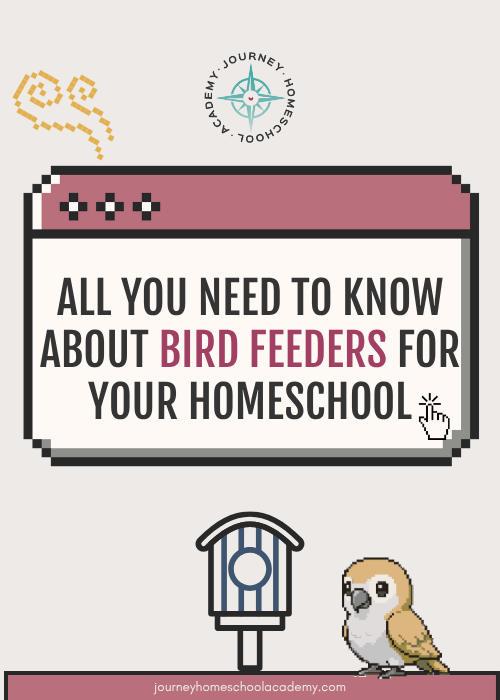
Why Bird Feeders Belong in Your Homeschool
Feeding birds is one of the simplest ways to make science come alive. It teaches observation, responsibility, and environmental awareness through natural curiosity.
Every time your kids spot a new visitor, they are learning:
- Biology: How birds eat, fly, and behave
- Data skills: Counting visitors, timing feedings, comparing seed types
- Art and writing: Sketching birds or journaling daily visits
Even faith can naturally weave in. Jesus reminded us in Matthew 6:26 that the birds neither sow nor reap, yet our Heavenly Father feeds them. Watching those same tiny creatures at your feeder becomes a living reminder of God’s care and creativity.
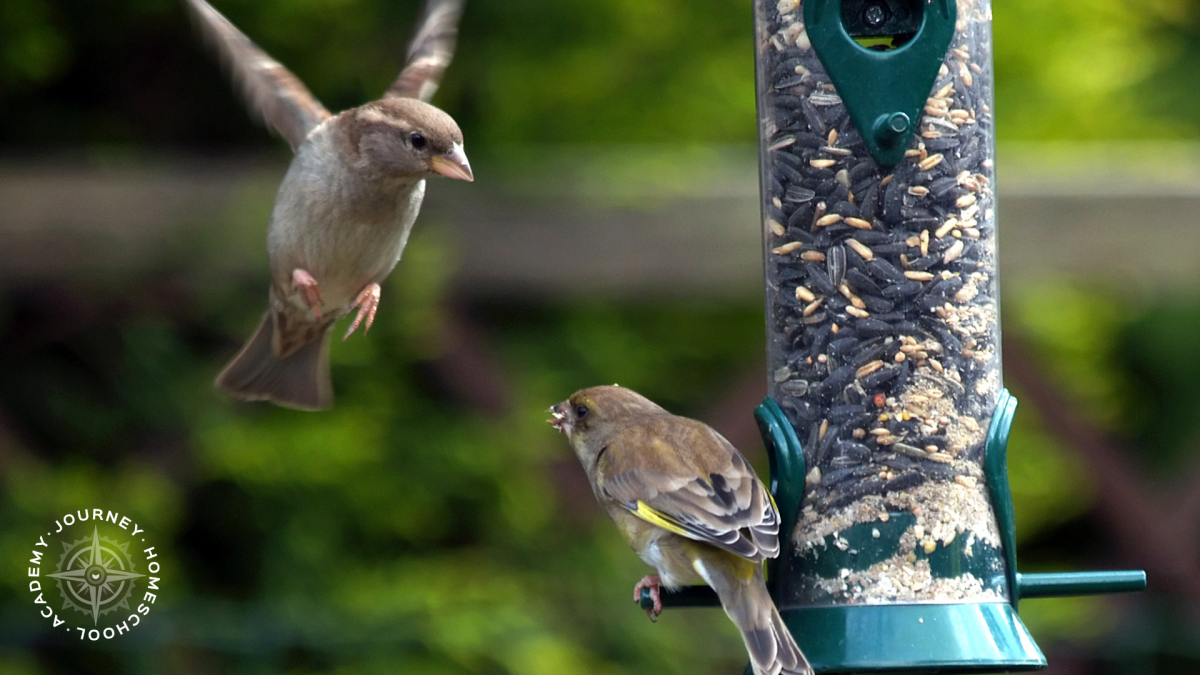
Choosing the Right Bird Feeder for Your Space
There is a bird feeder for every home and homeschool setup, no yard required. Here’s a quick guide to help you choose:
🪶 Platform Feeders
Perfect for attracting a wide variety of birds like cardinals, sparrows, and finches. Easy to fill and clean. 👉 Example on Amazon.
🐦 Tube Feeders
Best for small birds such as chickadees and finches. Multiple ports keep things busy. 👉 See an affordable option here.
🧈 Suet Feeders
Ideal for woodpeckers, nuthatches, and wrens. Great for winter when birds need high-energy food. 👉 Example: Sturdy metal suet feeder.
🌾 Ground Feeders
Attract doves, juncos, and towhees. Great for open spaces but keep an eye out for squirrels. 👉 Affordable ground feeder.
🪟 Window Feeders
Perfect for apartments or small spaces, and kids love these close-up views. 👉 Clear suction feeder example.
🌸 Hummingbird Feeders
Fun for studying flight patterns and pollination. 👉 Try this colorful feeder.
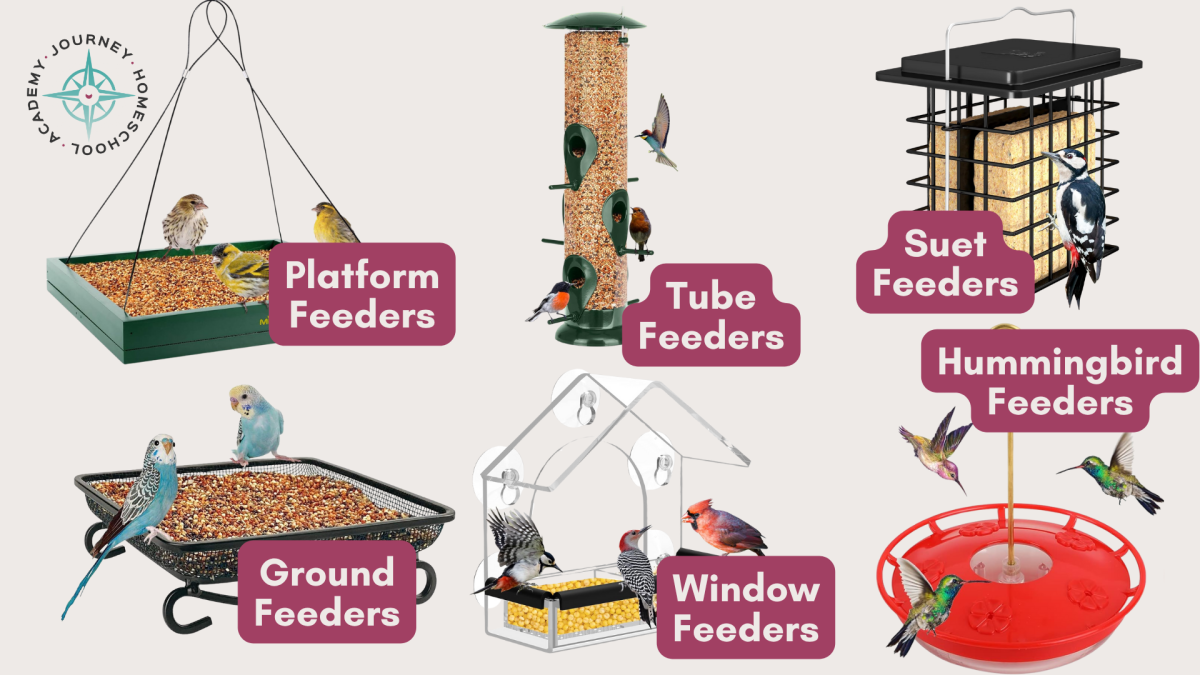
What to Feed (and What Not To)
Just like us, birds are picky eaters. The right seed will bring the right guests to your outdoor classroom.
Best bird foods:
- Black oil sunflower seed: All-purpose favorite for cardinals, finches, and chickadees
- Suet: Perfect for insect-eaters in colder months
- Fruit: Orange halves or apple slices for orioles, robins, and catbirds
- Nyjer (thistle): Beloved by goldfinches and pine siskins
- Peanuts: Jays and woodpeckers cannot resist them
Avoid:
- Bread and crackers (no nutrition)
- Moldy or wet seed
- Sugary snack mixes
💡 Homeschool tip: Have kids create a “Bird Menu Chart” in their nature journal to note which foods attract which birds.
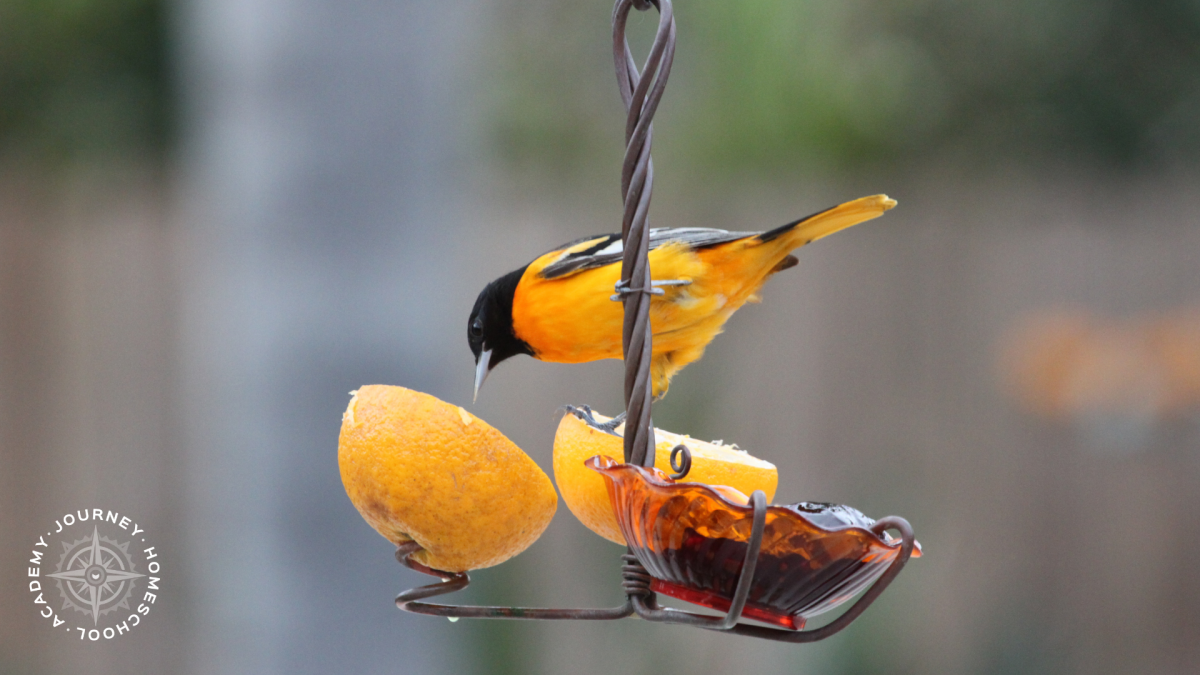
DIY Bird Feeders: Science Meets Art
If you do not want to buy one, no problem. Making bird feeders is an excellent homeschool project that integrates science, art, and even a bit of recycling.
Try one of these creative ideas:
- Pinecone feeder: Spread peanut butter, roll in birdseed, and hang with string (instructions here)
- Milk carton feeder: Cut windows, add string, and fill with seed (see tutorial)
- Toilet paper roll feeder: Quick, easy, and great for preschoolers (how-to guide)
- Orange half feeder: Use natural orange cups for a biodegradable option (instructions)
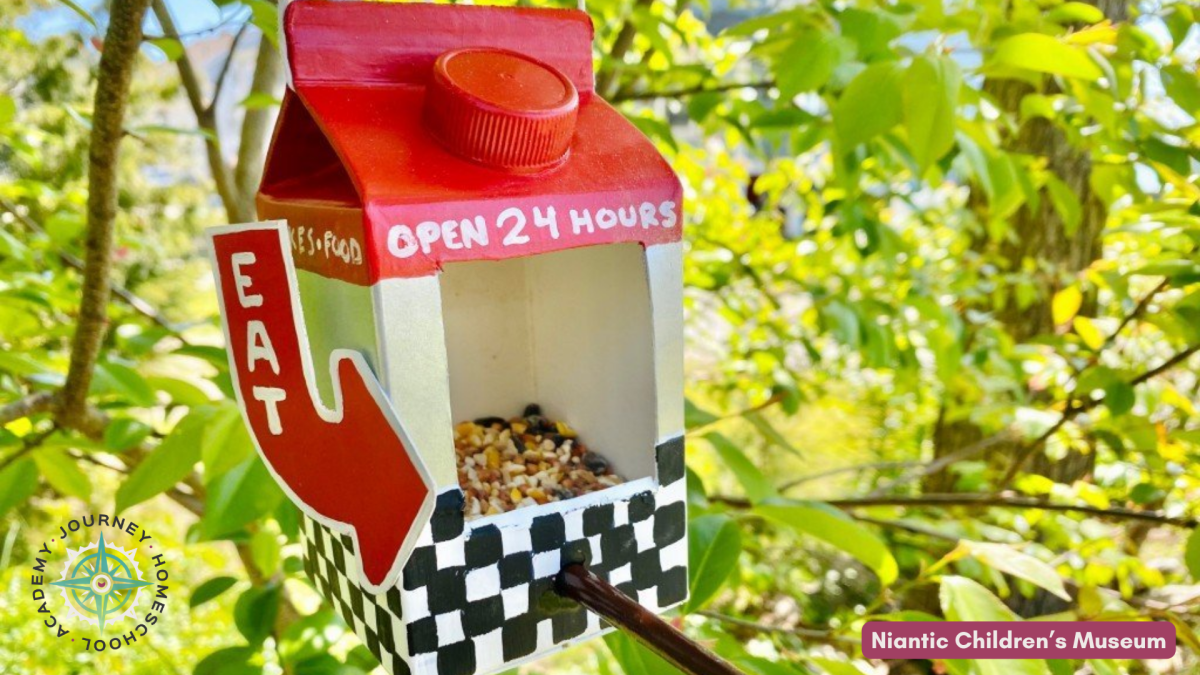
Setting Up and Maintaining Your Bird Feeding Station
Once your feeder is ready, location and upkeep make all the difference.
Placement tips:
- Near shrubs or trees for safety and resting spots
- Away from predator hiding spots such as thick bushes
- Within easy view of your homeschool space
Maintenance routine:
- Clean every two weeks with a vinegar-water mix
- Empty and dry after rain to prevent mold
- Refill regularly with fresh seed, and let kids help
Encourage students to keep a Bird Feeder Log. Have them record the date, weather, bird species, and seed type. Over time, they will start to see fascinating patterns.
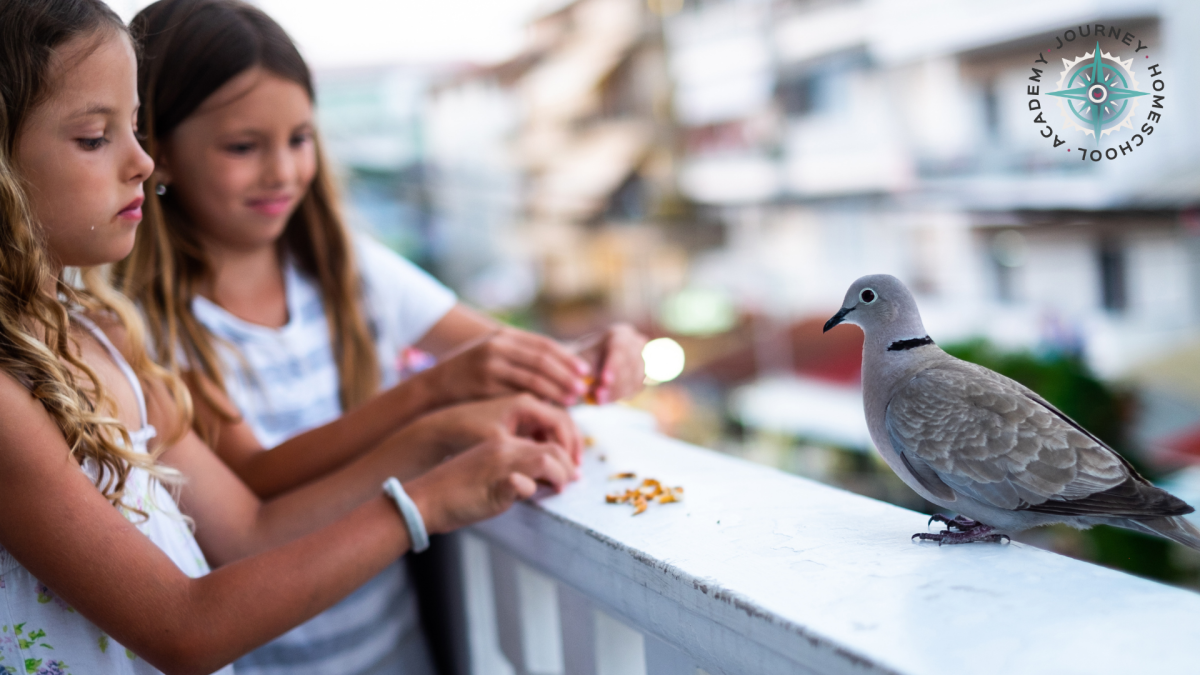
Seasonal Feeding Tips
Different birds visit in different seasons. Teach your kids how nature changes throughout the year by adjusting what you offer.
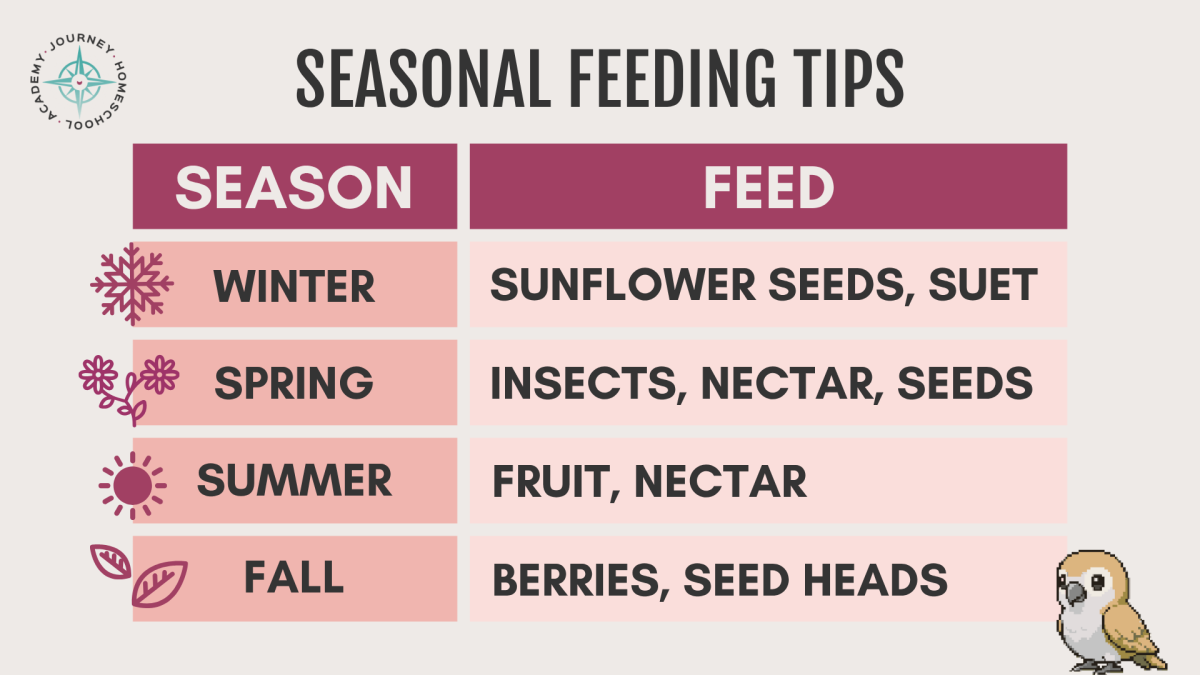
Troubleshooting Common Bird Feeder Problems
Even the best setups hit snags, but with a few adjustments, you can solve almost any problem quickly.
Unwanted guests:
- Squirrels: Use baffles or squirrel-proof feeders (example)
- Raccoons: Bring feeders in at night
- Cats: Place feeders high and far from perches
Dirty or moldy seed:
- Clean every two weeks
- Toss seed that gets wet after storms
No birds showing up:
- Move the feeder closer to trees or shrubs
- Provide water nearby, even a shallow bowl helps
- Be patient, it can take a week or two for birds to find your feeder
Seed mess or waste:
- Try no-waste mixes or seed trays
- Sweep regularly to discourage rodents
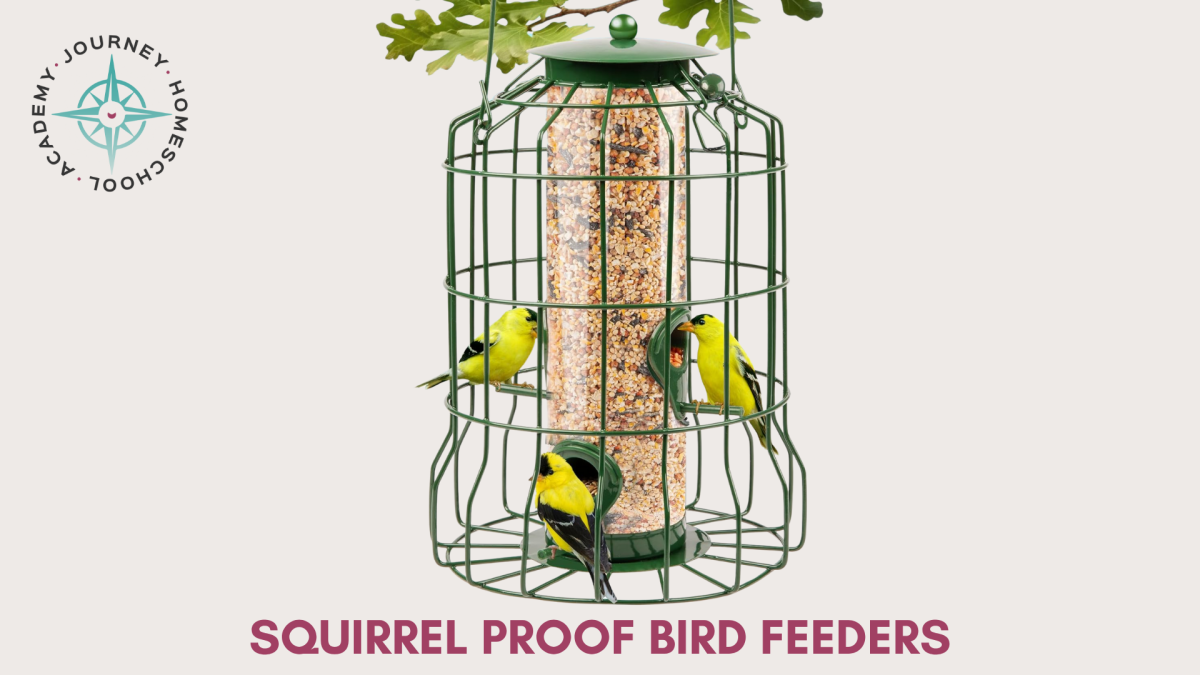
Turn Curiosity into a Lifetime of Learning
Your backyard is more than just outdoor space. It is a science lab, an art studio, and a front-row seat to the beauty of creation.
By adding bird feeders to your homeschool routine, your children can learn to observe carefully, care deeply, and marvel at the small wonders God has placed all around us.
When you are ready to take this fascination further, join us in World of Birds, JHA’s second-semester course launching January 2026. You will explore migration, anatomy, and the mysteries of flight through hands-on, faith-friendly learning.

